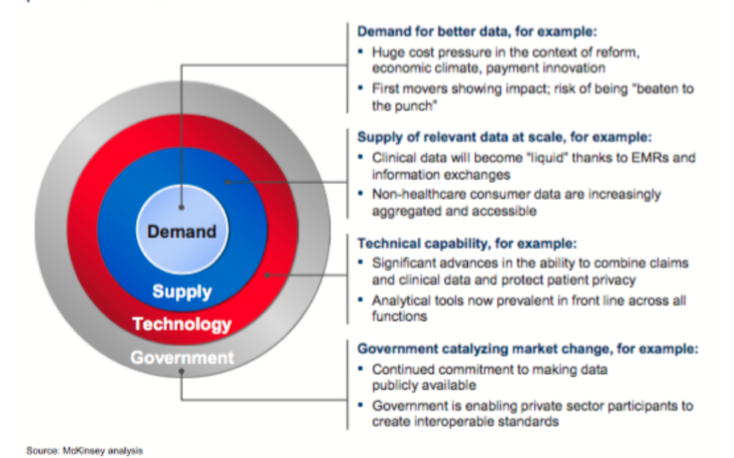The ambition of MIDAS centres on architecting, building and provisioning an operational big data platform that enables the policy makers in the project to make more informed decisions based on the actionable insights as derived from a plurality of population-based healthcare data and other related data. This challenge requires multi-disciplinary research and spans across policy thinking, technology, as well as advances in how data can be usefully deployed in aiding policy revision. However, in order for the project to deliver advances across these areas, the key technical challenge is in the development of the MIDAS platform, which is a solution that uses advanced big data technologies for collecting and visualising heterogeneous healthcare data as well as facilitating simulation and forecasting to aid better decision making amongst policy makers.
McKinsey’s 2013 report entitled ‘The ‘big data’ revolution in health care: Accelerating value and innovation’ sets the context of this work and indicates that it is ambitious and timely. Firstly, in terms of demand, there is significant economic pressure on existing healthcare budgets to derive more value from higher quality data and to better inform policy making with data that has already been warehoused or stored in silos but has not yet been used for operational decision-making (secondary purposes). Secondly, in terms of supply of relevant data at scale, we are seeing an increasing flow of data from clinical data stores and from personal data banks (social media, quantified self data). Thirdly, governments are catalysing market change with initiatives in ‘open data’. Finally, the technical capability is rapidly improving regarding the secure storage/management of heterogeneous data and data analytics (McKinsey, 2013). These circumstances have provided fertile ground for innovation as illustrated in Figure 1, below. Specifically, The MIDAS proposal represents innovative breakthroughs in the utility of big ‘healthcare related’ data since the tipping point is brought about by the timely convergence of multiple positive changes in: demand, supply, government policy and technology as outlined above.

Figure 1: Convergence of multiple positive changes creates a tipping point for innovation
